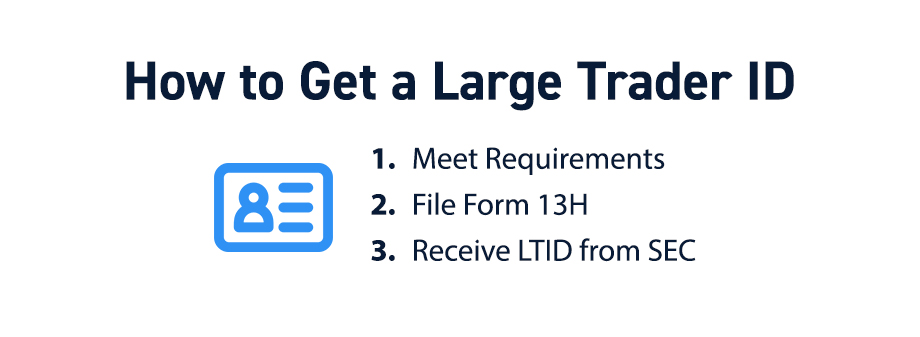Volatility in the markets can originate from all sorts of participants ranging from small retail investors to major institutions and hedge funds. The “meme” stock revolution has empowered the retail trader as groups of independent retail traders all jumping into specific stocks can cause major volatility and price moves. However, for these moves to continue to extend and remain elevated, it takes the hand of “large traders” to make this happen.
What is a “Large Trader”?
Simply put, a Large Trader is defined as someone or who trades 2,000,000 shares or $20 million worth of stock daily. As the label says, someone or something that trades a large amount of stock. They trade bigger size usually in blocks and have the ability to make significant market impact.

SEC Regulation
The U.S. Securities and Exchange Commission (SEC) adopted a Large Trader reporting requirement rule on July 26, 2011. This was prompted by the May 6, 2010, flash crash that caused the Dow Jones to collapse (-998.5 points) or (-9%) within minutes, causing the second largest intraday crash in history up to that time. Other indices, e-minis futures, exchange traded funds (ETFs) and stocks all collapsed as well. A combination of high frequency trading, spoofing, algorithms, and the Greek sovereign wealth crisis were all components. While the markets were able to quickly recover 600 points of losses from being down over (-1,000) points in the Dow Jones within 20 minutes, the damage was tremendous in terms of market credibility and stop-losses.
Investigation went on for years with various rules and curbs were created to monitor, track, and prevent a repeat of another flash crash. SEC realized that advent of program trading and high-frequency trading programs had the potential to disrupt markets especially with faster execution speeds and more access to various alternate trading systems (ATS). By implementing Large Trader ID numbers, they could track the activities forensically the participants most likely to move the markets.
Types of Traders
According to the U.S. Securities and Exchange Commission (SEC), a large trader is a person or entity that trades in excess of 2,000,000 shares or $20 million during any calendar day or 20,000,000 shares or $200 million during any calendar month. This can include hedge funds, mutual funds, family offices, and institutions including insurers and banks as well as retail traders. While most Large Traders are professional traders, large non-professional traders can also qualify if they meet the volume and/or valuation size triggers. Large traders are usually spotted by the size of their trades on time and sales with block purchases.
What is a Large Trader ID?
The Large Trader ID (LTID) is assigned by the SEC to individuals and entities that meet the thresholds of two million shares or $20 million on any trading day or 20 million shares or $200 million during any calendar month. It is the responsibility for the Large Trader to file a Form 13H with the SEC. Registered broker-dealers also have the responsibility to identify Large Traders who are customers that don’t have an LTID.

How Do You Get It
The SEC will provide a Large Trader ID (LTID) upon receipt of the Form 13H. The Rule 13h-1 requires larger traders to identify themselves by registering with the SEC to attain a unique large trader identification number. Larger traders are required to provide this ID number to broker-dealers, who will keep a transaction records and provide them to the SEC upon request. The goal is to provide the SEC with volatility data.
Large Trader Responsibilities

Reporting
Large Traders must identify themselves with the SEC and file the 13H. The 13H form provides the general information about business, regulatory status, affiliates, governance, and broker-dealers that the Large Trader has accounts. This enables the SEC to identify, track, analyze and investigate traders or entities that perform significant amounts of trading activity. It is the responsibility of Large Traders to disclose and provide their brokers with its LTID to the accounts that apply. This includes prime brokers, clearing brokers and executing brokers.
Filings
Large Traders are required to file the Form 13H initially to attain the LTID and annually thereafter to update the records. Any changes in the status or underlying business can be filed on a quarterly basis as well. If the Large Trader no longer meets the volume and/or market value thresholds, they can file for inactive status during the following filing period. There are six types of 13H filings composed of the initial filing, annual filing, amended filing (to update any information that was changed at the end of the quarter), inactive/reactivated filing (filed at the next annual filing) and a termination filing for Large Traders that cease operations or is acquired.
Record Keeping and Monitoring
Registered broker-dealers are required to maintain records for all transactions under the LTID. Additionally, broker-dealers are required to monitor its customers’ trading activity to identify those that may meet the Large Trader threshold and encourage them to register a 13H if so. The SEC can request transaction and trading activity information via the electronic Blue Sheets. The Blue Sheets are formal requests sent out to brokers and clearinghouses seeking information related to specific transaction and/or stocks. They are used to determine if any illegal activity has taken place and/or to analyze exceptional volatility.
Conclusion
The popularity of “meme” stocks has drawn a line in the sand between retail traders versus the “hedge funds”, main street versus Wall Street. Large traders certainly fall into the criteria as an antagonist in the supposed zero sum game. However, it’s prudent to apply logic and not be too quick to jump on the bandwagon that all large traders are “evil”. Large traders are a required component that makes up the markets to help provide the liquidity needed for stocks to maintain stability. The SEC has imposed this regulation to better identify sources of volatility to collect data and provide any future legislation to minimize market disruption to protect investors.






